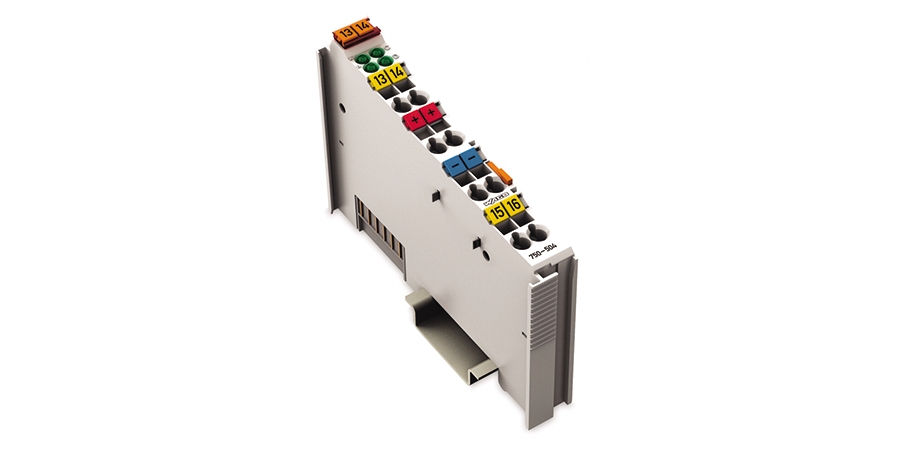
Digital Output Modules in PLC Systems: Features, Benefits, and Services
In the world of industrial automation, Programmable Logic Controllers (PLCs) are the brains behind countless operations, from manufacturing to process control. One key component of any PLC system is the digital output module. These modules act as an interface between the PLC's control logic and external devices or actuators, playing a crucial role in transforming digital control signals into physical actions, such as turning on motors, solenoid valves, or indicator lights.
This blog will explore what digital output modules are, their key features and benefits, and the essential services related to their refurbishment and repair. Whether you are working on maintaining an existing PLC system or upgrading your control infrastructure, understanding digital output modules is fundamental to ensuring seamless operation and efficiency.
What Is a Digital Output Module in a PLC System?
At its core, a digital output module in a PLC system is a hardware component that allows the PLC to control various industrial devices by converting the PLC’s digital signals into physical outputs. These outputs might include activating or deactivating machinery, controlling actuators, or providing feedback to operators through indicators. In simple terms, it acts as the 'decision-maker' for physical devices that need to respond to digital signals from the PLC.
These modules support various output types, such as relay outputs, transistor outputs, and solid-state outputs, to accommodate the wide variety of industrial devices they control. The versatility and reliability of digital output modules are what make them integral to automated systems.
Key Features and Benefits of Digital Output Modules
1. Output Compatibility
One of the most crucial features of digital output modules is their output compatibility. These modules can interface with a broad range of industrial devices, including motors, solenoid valves, lighting systems, and more. This compatibility ensures that the PLC system can seamlessly control numerous types of equipment without requiring a complete redesign of the infrastructure.
Digital output modules typically support relay outputs, which provide a contact closure for controlling devices like motors. They may also support transistor outputs or solid-state outputs, which offer high-speed switching capabilities and are often preferred for controlling modern automation systems that demand rapid, reliable responses.
2. High-Speed Output Response
In many industries, such as automotive manufacturing or process control, the speed at which the system reacts is crucial. Many digital output modules are designed to provide fast response times. These quick switching capabilities are essential when dealing with applications that require precise and immediate actions, such as opening or closing a valve in a chemical processing plant or activating a conveyor belt in an assembly line.
The ability to switch outputs at high speed enhances the precision of control systems and ensures that industrial processes run smoothly without delays, reducing the risk of downtime or production issues.
3. Output Protection
Digital output modules are engineered to ensure the longevity and protection of both the module itself and the devices connected to it. Many modules are equipped with built-in protection mechanisms, such as short-circuit protection or overcurrent protection. These features safeguard the components from electrical faults, which could otherwise lead to costly damage or downtime.
Overcurrent protection prevents the output devices from drawing excessive current, while short-circuit protection helps prevent catastrophic failures. These features ensure that the digital output module continues to function reliably under various load conditions, making them suitable for high-demand environments.
4. Scalability
Scalability is a key consideration in industrial automation. As businesses grow, so too do their automation requirements. PLC systems are built to be scalable, and the inclusion of multiple digital output modules allows for easy expansion of the control system.
Whether the system is controlling a few devices or thousands, digital output modules can be added as necessary to meet the growing needs of the operation. This scalability allows for a flexible approach to system design, accommodating everything from small, simple setups to large, complex automation systems with hundreds of output points.
5. Diagnostic Capabilities
Digital output modules today are not just about controlling devices—they also offer advanced diagnostic features. Many modern modules come with status indicators, feedback signals, and error detection capabilities, allowing operators to monitor the health and status of the outputs in real time.
These diagnostic features are invaluable for troubleshooting and maintaining operational efficiency. For example, if an output channel is malfunctioning, the diagnostic indicators can alert the operator, preventing the need for costly downtime and allowing for quick corrective action.
6. Easy Integration
When implementing a digital output module in a PLC system, ease of integration is a major consideration. These modules are designed with standardized communication protocols, making them compatible with most PLC systems. Whether you’re working with a Siemens, Allen-Bradley, or other PLC brands, the integration process remains simple and straightforward.
In addition to standardized communication, digital output modules often come with various mounting options to suit different PLC configurations. This ensures that users can quickly set up and install these modules, minimizing the need for specialized knowledge or extensive training.
7. Flexibility
Flexibility is another key advantage of digital output modules. In a dynamic industrial environment, automation systems need to adapt quickly to changing requirements. Digital output modules allow operators to configure output channels to specific needs, assigning particular functions or logic to each output based on the demands of the automation process.
This flexibility extends to the logic programming within the PLC system, allowing for customized outputs that suit different operational scenarios. Whether you need outputs to control basic devices or more complex systems like variable frequency drives (VFDs) or servo motors, digital output modules can handle a wide range of applications.
Digital Output Modules in Automation: Why They Matter
Digital output modules play a central role in the smooth operation of automated industrial systems. Without them, a PLC would be unable to interact with the physical world, limiting the control it has over devices and machinery. By translating digital signals from the PLC into real-world actions, digital output modules enable industries to operate efficiently, reliably, and with precision.
As automation systems become more complex, the demand for advanced digital output modules with higher functionality, greater reliability, and improved diagnostic capabilities continues to rise. The ability to control a range of devices—from basic on/off operations to intricate, high-speed switching applications—demonstrates the critical role these modules play in the automation landscape.
Refurbishment and Repair of Digital Output Modules
While digital output modules are designed for durability, like all electronic components, they can eventually wear out, malfunction, or become obsolete. In such cases, refurbishment and repair services become essential for maintaining the efficiency of your PLC system without the need for expensive replacements.
Refurbishment Services:
Refurbishing a digital output module involves bringing it back to its original operating condition through cleaning, component replacements, and thorough testing. A reliable refurbishment service will assess the module's overall health, address any issues like worn-out components or faulty connections, and ensure that it meets the original manufacturer specifications.
Choosing to refurbish rather than replace a digital output module can provide significant cost savings. Moreover, it also reduces the environmental impact associated with manufacturing new components, making it a more sustainable choice.
Repair Services:
In cases where a digital output module is malfunctioning but repairable, professional repair services can extend its life. Repair services typically involve diagnosing the issue—whether it’s a faulty connection, damaged output channel, or electrical malfunction—and fixing it using the appropriate parts. After repairs, the module will be thoroughly tested to ensure it works like new, allowing you to reintegrate it into your system quickly.
Why Opt for Refurbishment and Repair?
- Cost-Effective: Refurbishing and repairing modules are often more affordable than purchasing brand-new replacements.
- Faster Turnaround: If a module is critical to your system’s operation, a repair or refurbishment can often be completed more quickly than ordering a new module and waiting for delivery.
- Sustainability: By refurbishing and repairing your existing modules, you contribute to reducing electronic waste, aligning with environmentally responsible practices.
- Maintaining System Continuity: Refurbished or repaired modules can seamlessly integrate into existing systems, allowing for continued operation without the need for reprogramming or system overhauls.
Conclusion
Digital output modules are indispensable components of PLC-based automation systems. Their ability to convert digital control signals into physical outputs makes them essential for the precise and reliable control of industrial processes. Key features such as output compatibility, high-speed response, protection mechanisms, scalability, and diagnostic capabilities ensure that these modules meet the demands of diverse applications across various industries.
When digital output modules start to show signs of wear or malfunction, refurbishment and repair services offer a cost-effective and sustainable alternative to replacing them entirely. These services help extend the life of your equipment and maintain the reliability of your automation system, allowing your business to continue running smoothly.
In the ever-evolving world of industrial automation, digital output modules remain a cornerstone of operational efficiency, and their continued maintenance is essential for ensuring seamless operations.
 admin@shawa.in
admin@shawa.in  +91-9870100205
+91-9870100205 +91-9654048068
+91-9654048068


